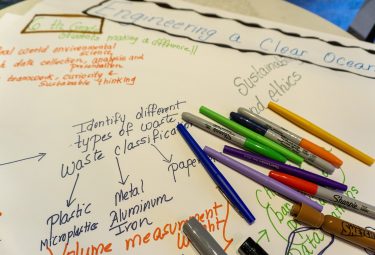Early bird rates are available for registration to the 2026 January ESIP Meeting. Register.
Pickup Truck Coding & Agricultural Monitoring: Meet Lindsay Barbieri
 Curled up in the driver's seat of a mud-layered pickup truck, I carefully tap out some final code adjustments on my laptop. The hum of the generator in the back drowns out the quiet air-gulping noises from our greenhouse gas analyzer beside it, so I keep a careful eye on the clock. Eight more minutes before the measurements from static chamber number 28 will be finished. Eight more minutes to combine the measurements from static chamber 27 with temperature, precipitation and soil moisture data and run it all through some quick soil flux rate analysis scripts.
Curled up in the driver's seat of a mud-layered pickup truck, I carefully tap out some final code adjustments on my laptop. The hum of the generator in the back drowns out the quiet air-gulping noises from our greenhouse gas analyzer beside it, so I keep a careful eye on the clock. Eight more minutes before the measurements from static chamber number 28 will be finished. Eight more minutes to combine the measurements from static chamber 27 with temperature, precipitation and soil moisture data and run it all through some quick soil flux rate analysis scripts.
Of course, this data analysis could wait until I’m back at my desk and not battling the steering wheel and stick shift for laptop space in the cab of a truck in the middle of a hay field – but these moments capture what I love most about my research:
- monitoring agricultural management practices (in-field data collection!)
- combining in-situ measurements from many different sensors (and different researchers!)
- layering and incorporating multi-scalar spatial and temporal datasets (drone imagery!)
- pulling it all together to explore and analyze trends in agricultural system dynamics
Grounded by this fieldwork, my research also explores ways to scale up these data through technology, infrastructure, and modeling. This larger extent of information aims to improve regional land management decision-making, and our overall understanding of the global environmental challenges of our time.
Agriculture is one critical and complex tangle in the web of global challenges. Moreover, agricultural systems interface with many other crucial components of our planet. These include physical interfaces with land (competition and sharing with other sectors and ecosystems) water (nutrient runoff and impairment of water bodies) and atmosphere (greenhouse gas emissions and necessary adaptation to climate change) as well as more intangible interfaces with our global food and economic systems.
I am a graduate student at the University of Vermont. Within the university, my work connects me with the Rubenstein School of Environment and Natural Resources, the Gund Institute for Ecological Economics, the Vermont Complex Systems Center and the Spatial Analysis Lab. I draw from all four of these academic centers to focus my research on innovative problem-solving at the interface of Agriculture, Climate, Environment and Technology.
There are a lot of exciting ways that I have been able to incorporate ESIP partnerships, knowledge and resources in my research. I hope to continue collaborating with the Earth Science Information community to improve the understanding and management of agricultural systems, especially in mitigating negative impacts and adapting to our changing climate. I’m looking forward to my Student Fellow position with the Earth Science Data Analytics Cluster, as well as continued involvement with the Drone Cluster, Agriculture and Climate Cluster, and the broader ESIP community. Come say hi –> @barbieriiv
Image: Rearview Mirror: ‘Looking Back' on a muddy summer of greenhouse gas monitoring



